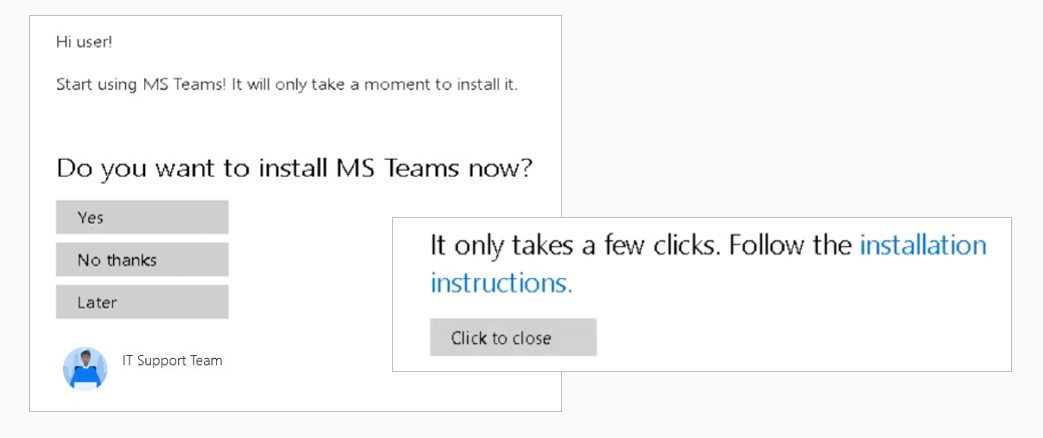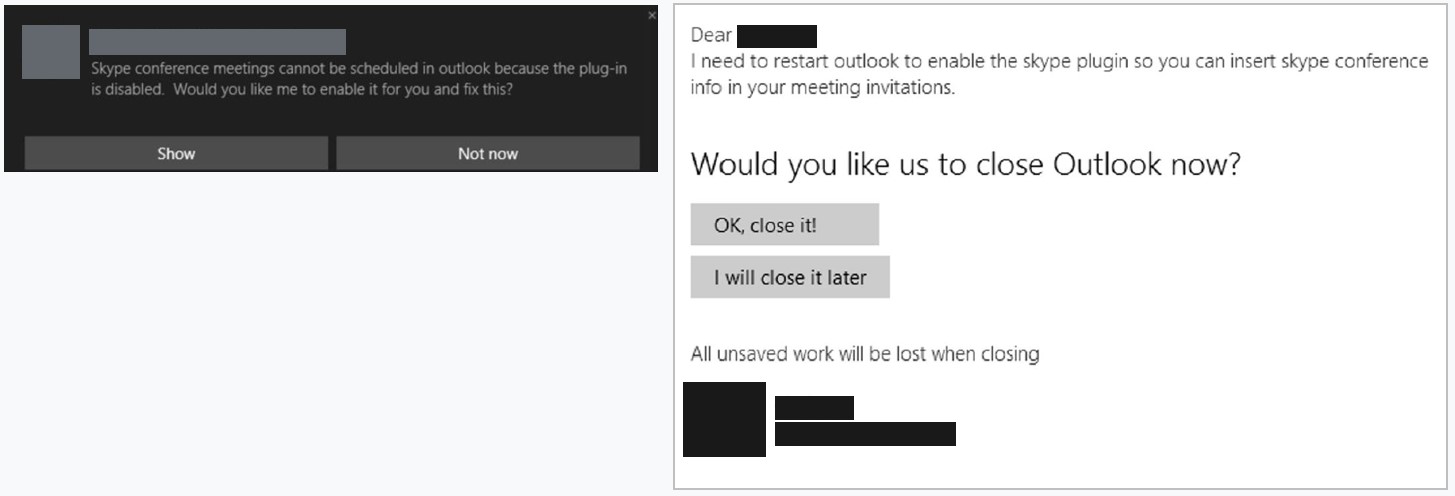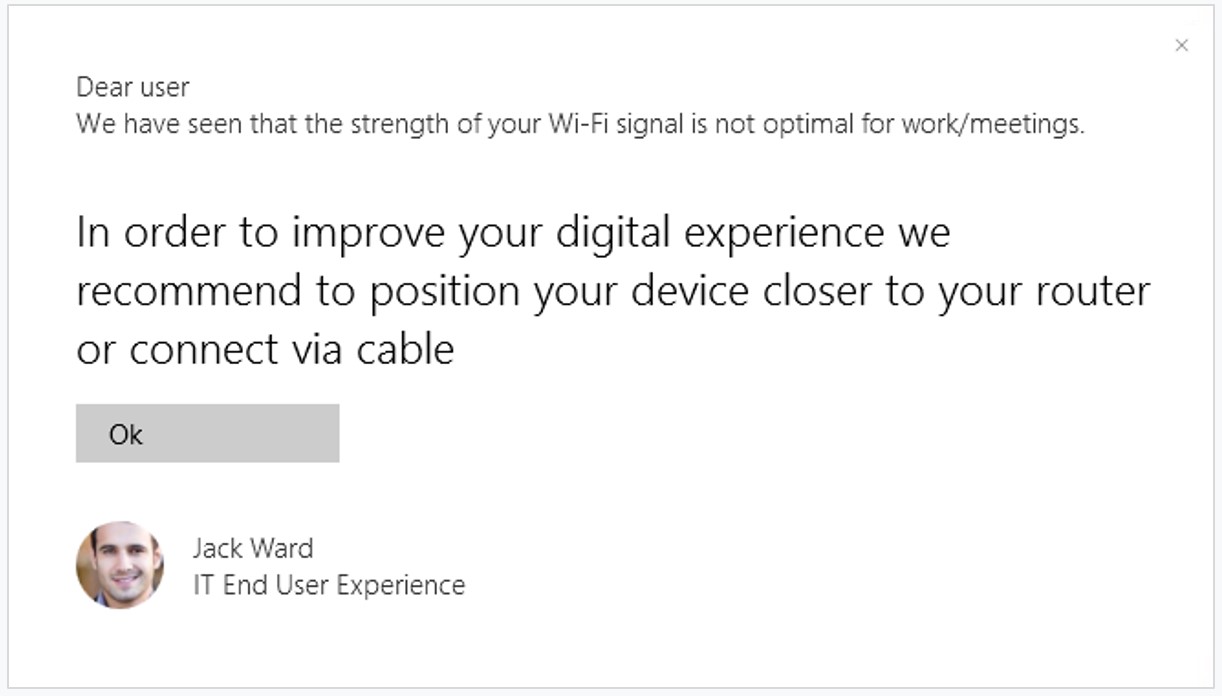How IT Can Enable Smooth Digital Collaboration | Engagement and Automation
Whenever a file transfer, instant messaging, email, or Wi-Fi failed in the office, an employee could stand up and walk over to deliver the message in person. It certainly didn’t grind their workday to a halt. But as organizations have grown globally, so has their reliance on digital collaboration—the critical tools and services that enable employees to remain productive when working together.
And with remote working becoming a not-so-temporary reality, the ability to collaborate digitally across the workplace has changed from an important-to-have to a must-have when shaping the Digital Employee Experience.
Getting your digital collaboration services up and running is only half the battle. Employees also need to adopt and use them properly to optimize collaboration and prevent unnecessary tickets.
In this blog series, we’ve discussed the game-changing benefits of automated self-help and how to keep your devices compliant using smart engagement and automation. In this post, I’ll cover examples of how organizations can proactively detect and address collaboration issues using similar methods to avoid disruptions in a distributed workforce.
Addressing collaboration with engagement and automation
The first step is to proactively detect issues using a comprehensive scoring system and detailed drill-down capabilities. That is, tracking the source of performance or experience degradations before they can impact employees at scale. IT teams can then quickly decide on the most impactful course of action—engagement, automated fixes, or a combination of both.

As always, Nexthink relies on three key capabilities to do this:
- Detailed analytics to quickly pinpoint the root cause of productivity and collaboration degradation
- Targeted engagement to reach out and drive adoption or deploy self-help capabilities
- Automated remote actions to remediate issues at scale on any impacted device population
Combining these capabilities has provided Nexthink customers with the abilities to address any identified collaboration issues in the best possible way while always keeping the employee in mind. This ensures that every employee can effectively collaborate and improve their overall digital experience when working remotely.
Let’s take a quick look at some recent examples.
Improve MS Teams presence on 1,000 devices using smart engagement
A northern European manufacturing company deployed an initial roll-out of MS Teams using Microsoft SCCM to retire Skype for Business. Post-migration, they quickly identified that over 2,000 devices still did not have MS Teams installed. With every employee working remotely, the company deemed this a critical issue that needed immediate attention as it could seriously impact productivity.

With SCCM failing to update this device population and IT running out of time, the Head of End-User Computing decided to take a different approach. They sent out an immediate Engage campaign to every user without Teams installed on their device and offered clear instructions on how to install it themselves.

The results were immediate. In 48 hours, they received an 80% response rate with over 1,200 devices successfully installing teams using the instructions provided. This allowed IT to avoid hundreds of installation tickets, which can take upwards of 15 minutes per device to resolve manually. It saved them thousands of potential support-hours and ensured that every employee could collaborate effectively, with minimal downtime, on the same platform.
Proactive MS Teams training
Once successfully migrated, the same manufacturing company noticed a small rise in Service Desk tickets related to their new collaboration tool—MS Teams. Three recurring complaints were apparent: location of features, scheduling, and meeting management. IT quickly noticed there was no technical issue here—the problem was from poor adoption and service usage.
To remedy, they identified the need to deploy an educational campaign to train employees about proper Teams usage to drive adoption, reduce ticket count and improve the collaboration experience. The team created an Engage campaign targeting new MS Teams users to help with the top three Teams issues identified.

Overall, they deployed three adoption campaigns to train users on how to join a meeting, schedule a meeting and use chat features, each receiving 71%, 69% and 79% successful response rates, respectively. In total, hundreds of employees accessed the proper training with minimal effort. Although this was not a technical fix, IT significantly reduced ticket count related to incorrect usage and, in the process, improve employee’s digital collaboration experience.
Enabling Skype for Business Outlook plug-in on 95% of devices
This US financial company received a ticket about an employee missing the Skype-for-business plug-in for Outlook. A quick search showed that this user was not alone—hundreds of other devices were also missing the plug-in. They simply never raised it with IT.

Using self-help automation, The IT team was able to resolve the issue quickly. IT sent a custom Engage campaign to every device missing the plug-in and asked the user if they’d like to enable it. By clicking OK, a remote action would execute the add-in installation on the device.

In a single week, 95% of devices had Skype for Business plug-in enabled. A month later, the IT team noticed a 28% reduction in Skype for Business related tickets and a 12% reduction in Outlook related tickets. This not only saved precious productivity hours for the support team, but also undoubtedly improved the overall collaboration experience.
Improving Outlook performance with automation
Last year, this Dutch financial company discovered several outdated Outlook binaries leading to performance issues and, in turn, application crashes. While some employees had raised tickets, the IT team quickly discovered that hundreds more were experiencing the same frustration but remained silent about it. Outlook is one of the key productivity and collaboration tools for the firm. The IT teams quickly deployed an automated remote action across the workplace to immediately update every device with the problematic binaries.

After a couple of days, they noticed a 93% reduction in Outlook crashes. What’s more, the support team has kept this remote action updated and available to consistently fix similar Outlook crashes. Since mid-2019, the company has not experienced any significant uptick in Outlook crashes by having this automation at hand.
Troubleshooting Wi-Fi signal
After a complete move to remote working in early March, a global car manufacturing company detected that over 3,000 employees (15% of their remote workforce) experienced poor audio/video quality with their main collaboration tool, creating a significant drop to their Digital Employee Experience Score. A quick look at Nexthink’s level 1 dashboard showed that employees with poor audio/video call quality had a poor Wi-Fi signal or health.

The IT team could not magically fix employees’ routers or ISP contracts. What they could do, however, was educate them on proper at-home Wi-Fi usage. The IT team sent out an Engage campaign targeting all affected users with clear on-screen messages asking users to move closer to their router or how to switch to a stronger band on their router.

A week later, just about all of the 3,000 employees had improved their Wi-Fi-Strength, their Teams and Skype performance, which positively impacted the overall Digital Experience Score as well.
Collaboration is a crucial driver of digital employee experience, especially during these times of remote working. Faced with constant new technologies, unceasing software updates and rising employee expectations, IT teams need to ensure they can consistently deliver a great digital collaboration experience.
Targeted engagement allows IT to drive proper usage and adoption of new collaboration tools, while automation offers instant diagnosis and remediation of technical issues. And, of course, the combination of both enables automated self-help opportunities for true proactive collaboration management.
Ultimately, this not only reduces IT ticket count and optimizes support productivity, but also ensures employees can confidently and effectively collaborate with their colleagues regardless of their location and improve their overall digital experiences.
Read more about Engagement and Automation success stories in previous blog posts:
Schedule a Demo to discover how you can ensure a great collaboration experience across your own workforce.
Related posts:
- How to Keep Your Digital Devices Current | Engagement & Automation
- How IT & Employees Can Work Better Together | Engagement & Automation
- Powering the Digital Employee Experience for Remote Workers
- The DEX Show | Podcast #3 – CIO in the Age of Experience w/ Martha Heller